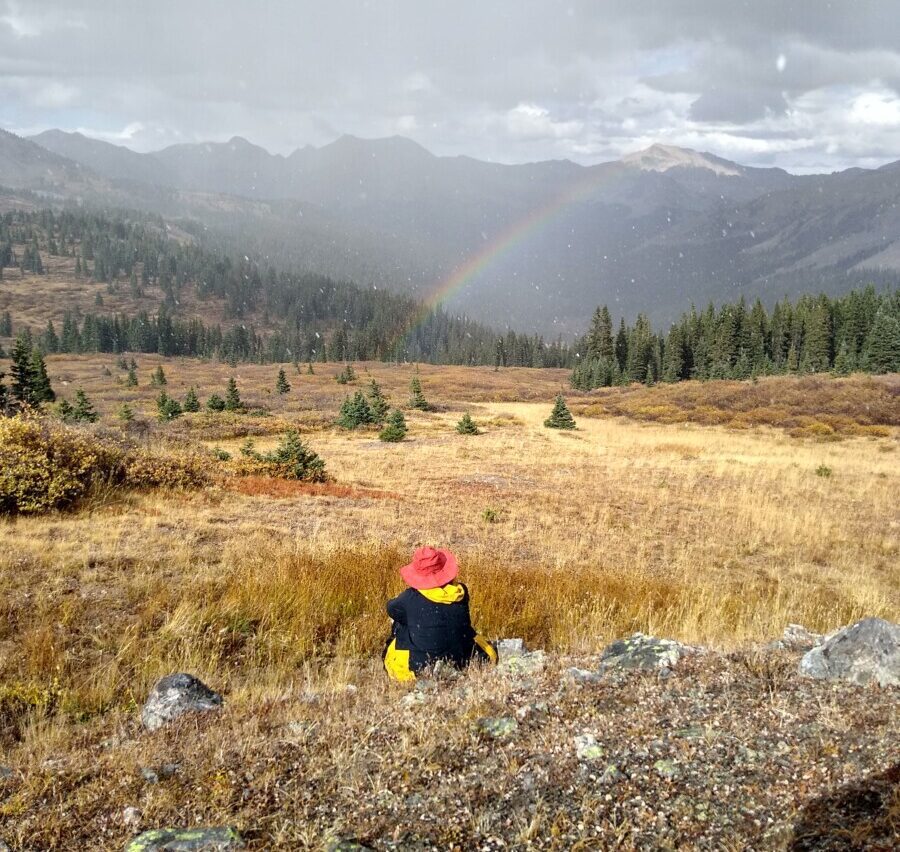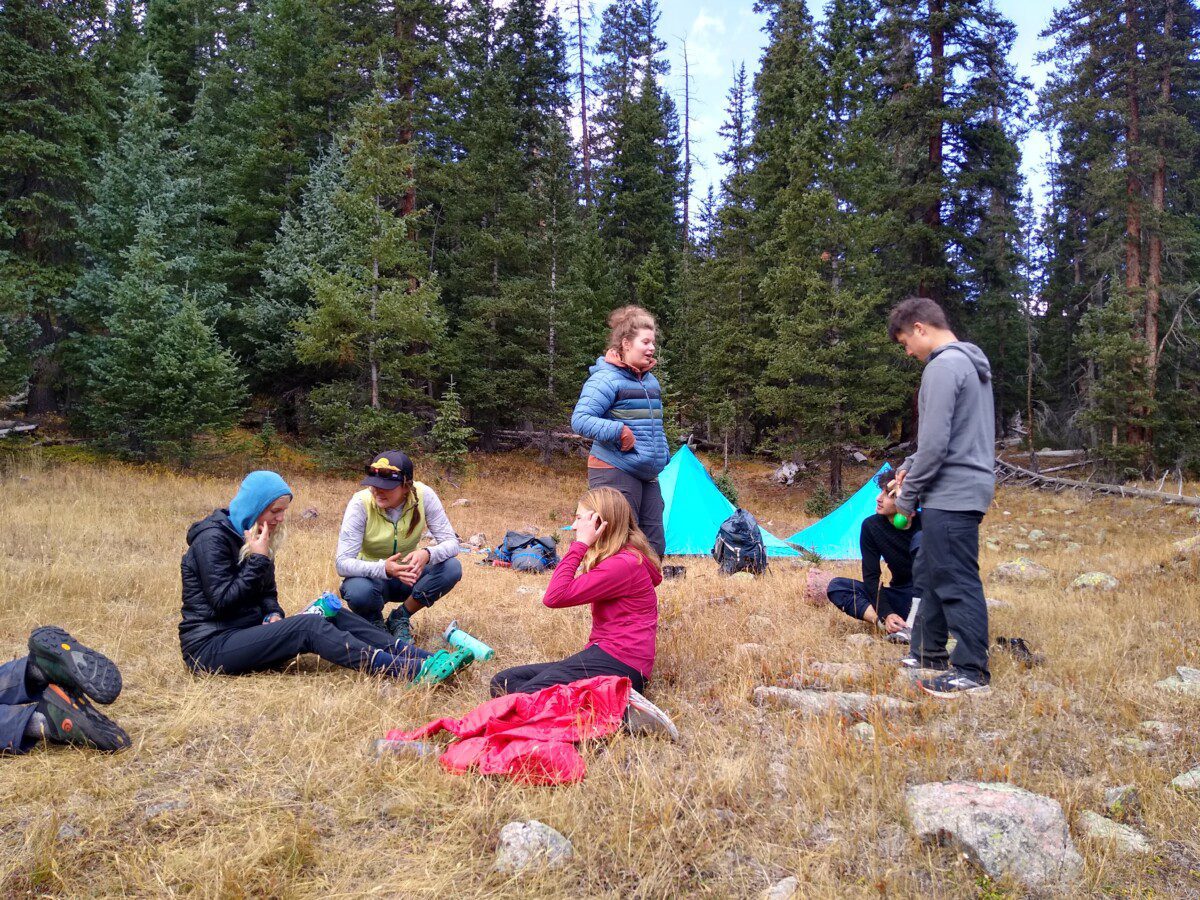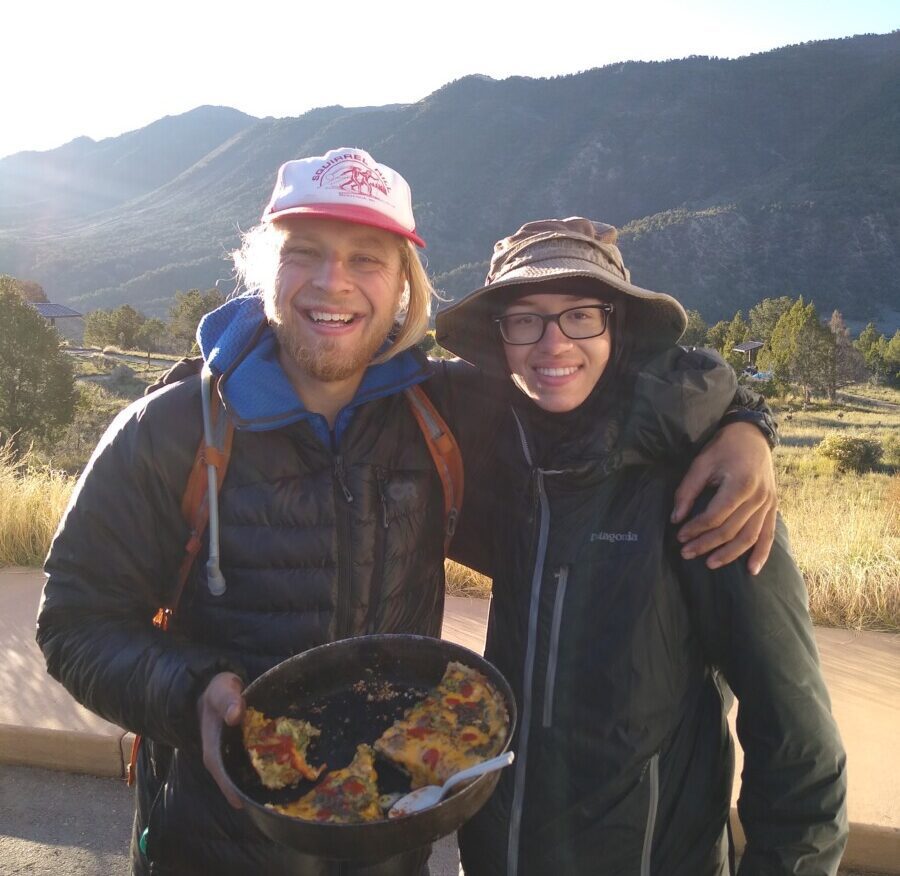HMI Trek
Writtten by Kiran and Bernadette:
It’s Kiran and Bernadette! After our transition days following the Sawatch expedition we had the skills and knowledge to craft our own 8 day ration for the next portion of our semester in Rifle Gap State Park. Our adventure began in a bus headed West. Driving along the Colorado River, we sat watching the river flow through turning aspens and winding train tracks.
The bus suddenly stopped. Our vehicle was engulfed by a herd of cattle, with real life Cowboys! Jokingly we claimed the livestock for our own as we listened to their symphony of moos. After the sea of ungulates had left us, we proceeded down the dirt road to our beautiful base camp location overlooking the edge of the Rifle Gap Reservoir. After arriving, we left for Walmart attempting to purchase all the food within our budget. An epic grocery shopping spree lasting 4 and a half hours. Much dehydrated milk and self assembled “GORP” later, we set up our “home” for the coming days.

The next day, our cook groups took advantage of the Coleman double stove tops and made a quick cinnamon pancake breakfast before heading to High Water Farm. As Leader’s of the Day, we were tasked with planning a lesson on the Colorado River and its significance. The river supplies water to 7 states and is an integral part of irrigation, agriculture, drinking water, and hydroelectric power generation. Water allotment is a point of contention and Native Americans are usually not considered even though they have seniority under the law of “First Use”. This just briefly scraped the surface of the trouble with water in the Colorado River Basin. Visiting Highwater, we began to understand the importance of water and how it can be used properly to farm sustainably.
Our two days volunteering at Highwater consisted of weeding beds, mulching, and “debeaning” (or removing beans from the pods). Soaking in the rays of sun, our team learned about how farming takes patience, hard work, and a lot of knowledge on the local land. We had lessons on The AmeriCorps, chicken maintenance, and the science behind composting.

On one of our last days in Rifle, we returned to the preserve to plant native fauna, like cottonwood, to restore a wetland. Practicing what we learned at the farm, we started digging holes, carefully placing the trees giving the roots room to breathe, watering, and mulching. Sharing conversations with the other volunteers, we met all sorts of different characters who were all very passionate about protecting local ecosystems. One stranger even invited us to his senior homecoming! He must have wanted to continue the ecology convo on the dancefloor…
Our next endeavor was rock climbing. For many of us this was a new skill and potentially a source of anxiety. However, we learned that rock climbing safety is all about redundancy, safety features on top of safety features. While this alleviated some fear, the true test was the real thing. Rifle, a world famous rock climbing location, was a perfect place to learn the art. We practiced climbing and belaying in the shadows of the cliff sides. We even started assimilating climbing culture using slang like “this goes”, “beta”, “thunder-grip”, and “mono”. Lots of fun! In preparation for our next expedition in the canyons, we also learned how to repel.

Nightly songs, sleeping under the stars, late bathroom talks, and black widow spiders made our time at Rifle memorable. The lessons of Wilderness, water, and identity made it uniquely special. The departure of JP marked a melancholy end to our base camping and the arrival of Sydney marked an optimistic start to the Canyons.